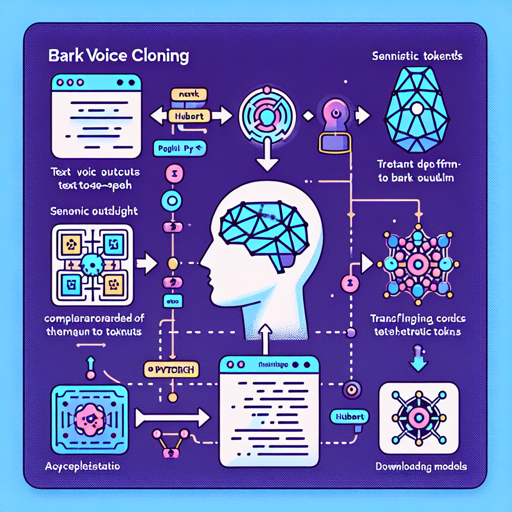Voice cloning is one of the remarkable advancements in text-to-speech technology, allowing you to create unique voices or replicate existing ones with precise fidelity. In this blog post, you’ll learn how to use Bark Voice Cloning, a model that processes outputs from HuBERT and turns them into semantic tokens compatible with Bark’s text-to-speech capabilities. This guide will walk you through the steps of voice cloning and masking, making it user-friendly and easy to follow.
What You Need to Know Before You Start
- Ensure you have PyTorch installed in your environment.
- Familiarize yourself with the Bark and HuBERT models.
- Download the models required from the repository. Visit the code repo for detailed instructions.
The Magic of Voice Cloning
Voice cloning involves creating a new voice for text-to-speech. Think of it like crafting a musical instrument; you have the raw materials (the audio file) and adjust the specifications (the prompts and models) to produce a distinct sound (the cloned voice).
Step-by-Step Process for Voice Cloning
- Load your WAV audio file into your PyTorch application.
- For the fine prompt, extract discrete representations. Remember to apply
.squeeze()to the resulting codes. - For the coarse prompt, use the command:
fine_prompt[:2, :]to derive it from the fine prompt. - For semantics extraction, load a HuBERT model without K-means. You can edit implementations like audiolm-pytorch to skip K-means.
- To obtain actual semantic tokens, run these tokens through the model, ensuring your output is compatible with Bark.
- Finally, save these files in an NPZ format using:
numpy.savez(semantic_prompt=semantics, fine_prompt=fine, coarse_prompt=coarse). This file is your goldmine containing the cloned voice.
Voice Masking: A New Dimension
Voice masking allows you to replace a voice in an audio clip, making this technology even more versatile.
Random Voice Replacement Process
- Extract semantics from the audio clip using HuBERT.
- Run
semantic_to_waveformfrom Bark’s API with the extracted semantics. - The output will be the generated audio with the new voice.
Transfer Voice Replacement Process
- Create a speaker file using the voice cloning steps above.
- Extract the semantics from the desired audio clip that you want to be spoken.
- Run
semantics_to_waveformfrom Bark’s API with the extracted semantics and your created speaker prompt. - The final output is the audio seamlessly incorporating the new voice.
Troubleshooting Ideas
If you encounter any issues while working with Bark voice cloning, here are some troubleshooting tips:
- Make sure that your audio file format is supported and doesn’t have any encoding issues.
- Check that you correctly followed the steps, particularly in loading models and managing prompts. A small oversight can lead to errors.
- If the voice cloning doesn’t sound right, revisit your fine and coarse prompts. They are crucial in shaping the output.
- For further assistance, consult the community or relevant forums dedicated to voice cloning technology.
For more insights, updates, or to collaborate on AI development projects, stay connected with fxis.ai.
Final Thoughts
At fxis.ai, we believe that such advancements are crucial for the future of AI, as they enable more comprehensive and effective solutions. Our team is continually exploring new methodologies to push the envelope in artificial intelligence, ensuring that our clients benefit from the latest technological innovations. Remember to use voice cloning responsibly and ethically!

